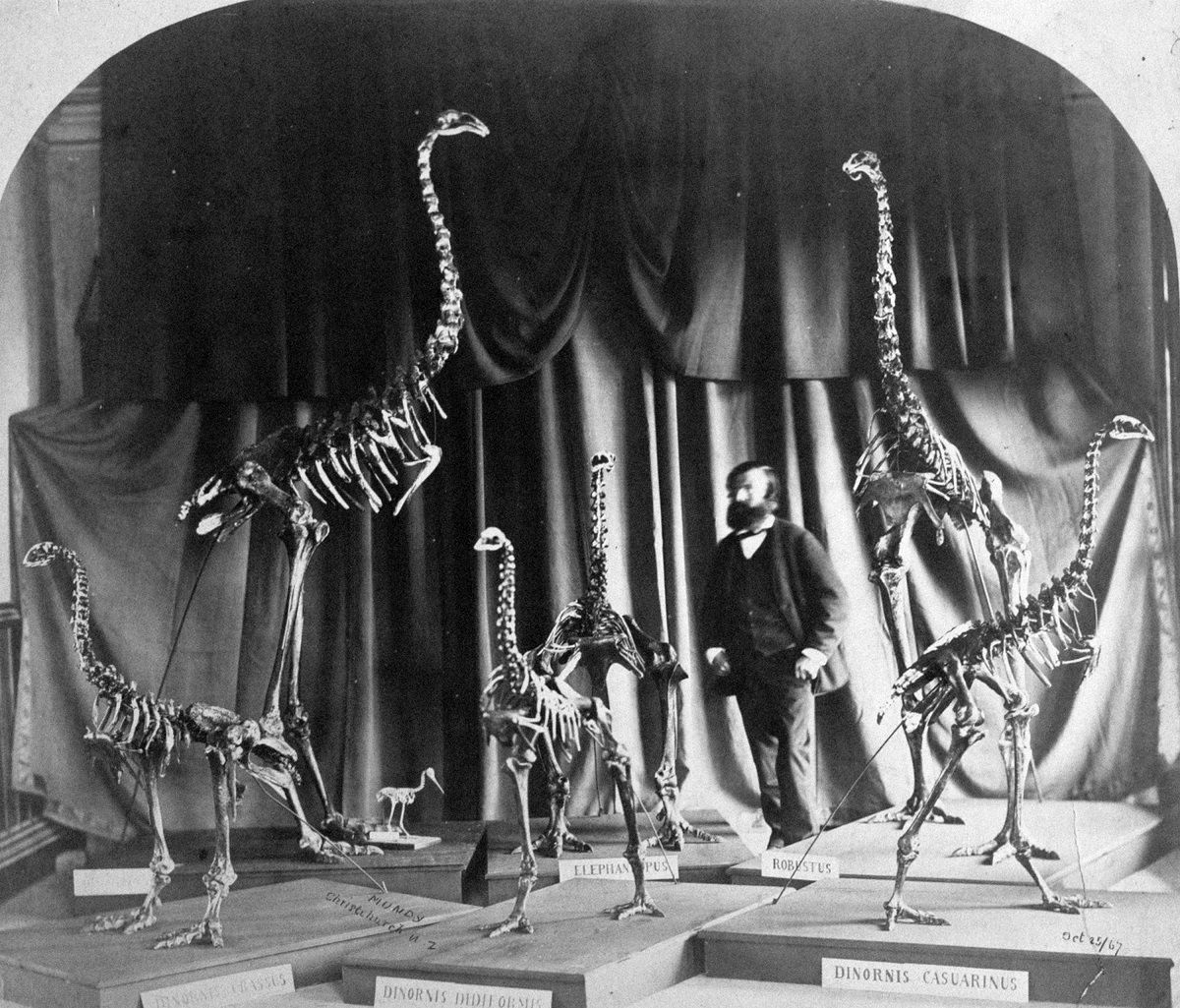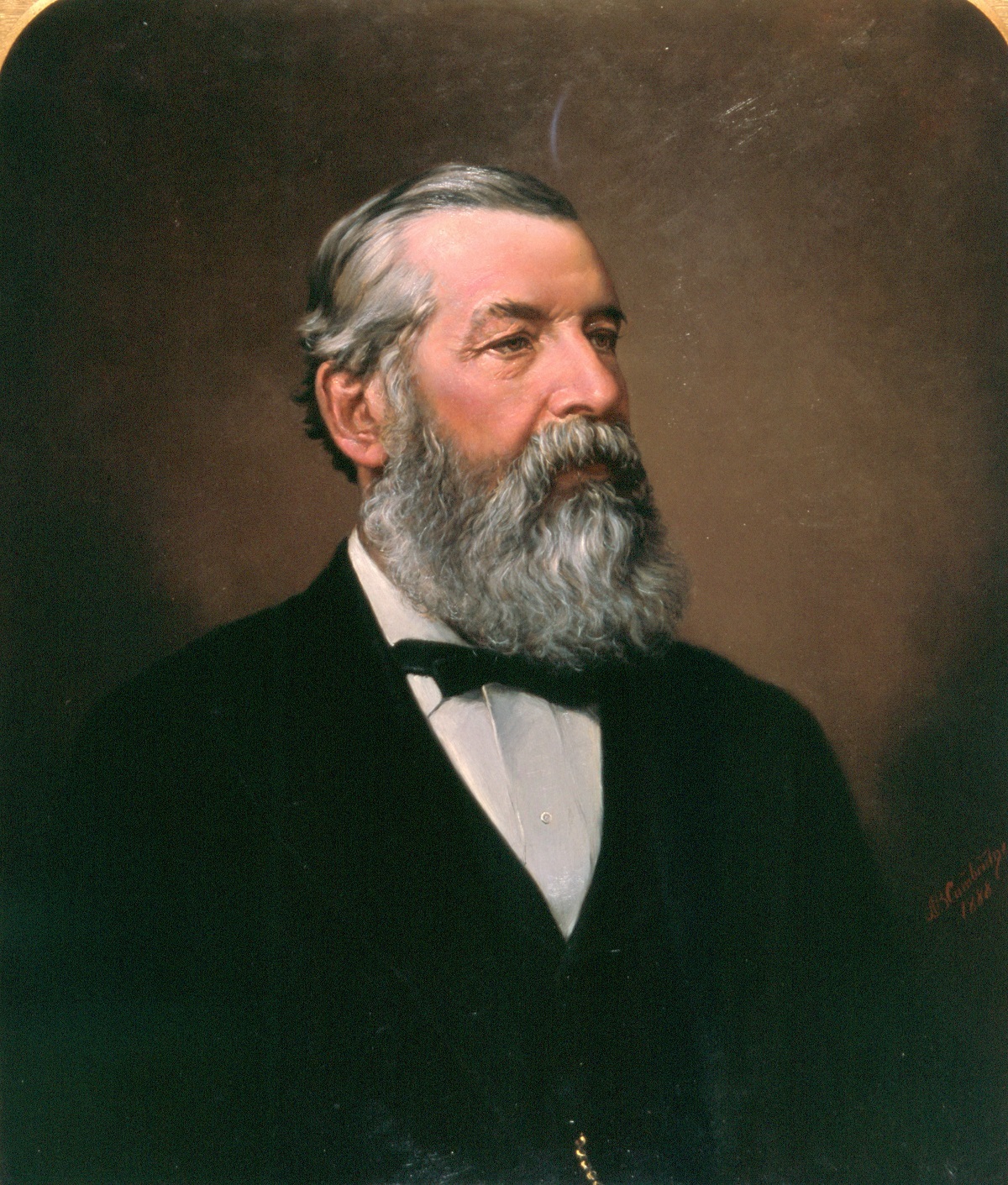One hundred and fifty years ago today, on Tuesday 3 December 1867, Canterbury Museum first opened its doors to the public. It was a very different space from the Museum we now know.
German born Johann Franz Julius Haast, the provincial geologist, had begun collecting specimens for a possible museum when his role commenced in 1861. As geologist he examined, explored and reported on the mineral potential of the Canterbury region which, at the time, also included Westland. Making important discoveries about the geology, topography and botany of the province, Haast quickly assembled a wealth of material that demonstrated the natural history of the area.
In 1865, with the discovery of moa remains at Glenmark Station, near Waipara in North Canterbury, Haast and several others excavated hundreds of bones both for the Museum’s collection and for a programme of exchanges with leading museums around the world. This began a collection of internationally-important material for a regional museum in the South Island of New Zealand.

By 1867, there was a strong public call for access to the treasures Haast had accumulated in his Government-funded role. When it first opened to the public, the Museum was housed in three rooms of the Canterbury Provincial Council Buildings on Durham Street. Visitors were welcomed on Tuesdays, Thursdays and Saturdays from 11.00 am to 3.00 pm and Haast often accompanied them through the displays, taking time to share his favourite collections and stories.

At the north-east end of the Provincial Council Building, near the Treasury office, were two of the rooms set aside to display the collections. Visitors passed up a narrow staircase to view geological and botanical specimens. The minerals, rocks, gold, fossils and shells were all named, classified and arranged by Haast and his assistants. At the opposite end of the Provincial Council Building, upstairs at the end of the south-east corner (originally a refreshment room for Provincial Councillors) were the zoological specimens. Six moa skeletons were displayed together with cases of 250 New Zealand birds as well as a selection of Australian snakes, lizards and animals. During the first 7 months, an estimated 110 people visited the Museum each week.

Newspaper reports of the time were very complimentary about the treasures on display. Mention was made of unusual botanical specimens, of items that linked to well-known personalities and of some of the animal skeletons on display which had originally lived in the domain, later the Botanic Gardens. The most praise, however, was reserved for the extraordinary display of moa skeletons. Reports of the time speculated that these (likely extinct) giant birds measured as much as 5 metres in height. By the early 2000s, Canterbury Museum researchers had confirmed that moa probably became extinct in the fourteenth century and would have reached a maximum height of 2.5 metres.
The day after opening to the public, on Wednesday 4 December, the Press paid tribute to Haast, thanking him for his excellent work and recording:
It would be impossible to enumerate within reasonable limits one-tenth of the objects of interest which may be seen without any trouble by the visitor to the Museum; still more impossible would it be to give any idea of the intrinsic beauty of the majority of specimens which have been so carefully collected. We can only recommend all who have an opportunity of doing so pay our Museum a visit…
Within a matter of days, the Press called for a permanent and purpose-built museum. It took over two years and £1,683 in Government and subscriber funds to construct a suitable stone building. Opening to the public on 1 October 1870, the Benjamin Mountfort-designed building on Antigua Street, now Rolleston Avenue, is still at the heart of the current buildings (and now known as the Mountfort Gallery). When the Museum opened, it housed a remarkable 7,887 treasures.
The establishment of a Museum with regular opening hours was a remarkable achievement for the Canterbury Association settlers who had arrived just 20 years previously. Today the Museum attracts more than three-quarters of a million visitors each year. In the 150 years since it started Canterbury Museum has continued building on the collections begun by Haast. Now it's home to an estimated 2.3 million collection items that help us tell a myriad of stories about Canterbury, New Zealand and the world.





